Common Earthball / Summer/ Autumn / Toxic
Embark on a journey into the mysterious world of the Common Earthball, scientifically known as Scleroderma Citrinum, as we explore the enigmatic qualities of this intriguing fungus.
In this blog post, we delve into the unique characteristics and ecological significance of the Common Earthball, a mushroom that captures the imagination while remaining inedible. With its rough, earth-toned exterior and curious internal features, the Common Earthball invites us to ponder its purpose and role in nature. Join us as we uncover its habitat, identification, and fascinating symbiotic relationships with the surrounding environment. While the Common Earthball holds no culinary value due to its unpleasant taste and texture, its presence reminds us of the intricacies and diversity of the fungal kingdom. Let us appreciate the humble enigma of Scleroderma Citrinum, recognising its contribution to the natural world and cherishing its presence as a unique part of our ecosystem.
Scientific Name
Scleroderma Citrinum
Common Names
Common Earthball, Poison Puffball, Scaly Earthball, Pigskin Puffball, Woodland Potatoes.
Family
Sclerodermataceae
Habitat
They can be found in most woods, on heathland and sometimes in short grass.
Description
The most common Earthball found in the UK, often mistaken for Puffballs or Truffles, there are conflicting reports about its edibility, we consider them toxic.
Out of interest and intrigue, one of our foragers actually personally trialled the edibility of this mushroom with a friend, one of them was fine and really enjoyed the mushroom, the other was violently sick after 20 minutes.
Foraging Video for the Common Earthball
Identifying Features:
Cap:
No obvious cap, they are generally spherical or potato-shaped. The colour ranges from tan to brown with a darker wart-like surface. They have thick leathery skin (peridium). Inside there is a mass of purple to brown spores, although when very young they are much paler and are almost white inside, at this stage they can look a little like an edible Puffball.
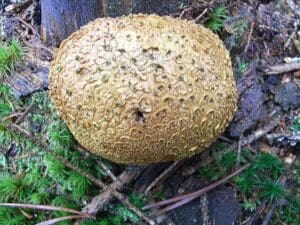
Stem:
No real stem, but there may be some mycelium threads running into the soil.
Gills:
No gills, this mushroom is one of the gasteromycetes or stomach fungi, the spores for these species are produced inside the fruiting body and when ready a small slit will appear on the top, then every time a raindrop or animal touches the mushroom clouds of spores are released.
Smell:
An unpleasant chemical smell, a bit like rubber.
Spores:
Brown.
Known hazards
There are reports of them being eaten in parts of Eastern Europe but we consider them to be a toxic species. They have been known to cause gastrointestinal issues in humans and animals.
Potential lookalikes
Other Earthballs, the Leopard Earthball (Scleroderma Areolatum) and the Scaly Earthball (Scleroderma Verrucosum) do like quite similar but all three are considered toxic so should all be avoided.
They are often mistaken for the Common Puffball (Lycoperdon Perlatum) but Puffballs are generally lighter in colour, have much softer flesh and when they are cut in half they should be pure white inside with no discolouration.
Extra Notes from the foragers
Common Earthballs are closely related to the Boletes but they do also get parasitised by the Parasitic Bolete (Pseudoboletus Parasiticus) they are a relatively rare find in the UK but they are an edible species.
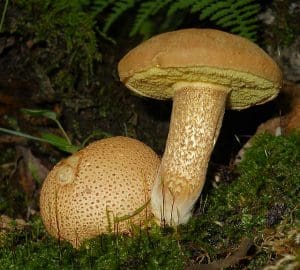



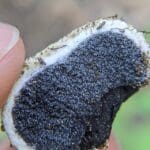
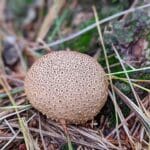
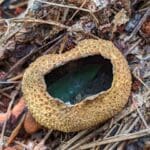
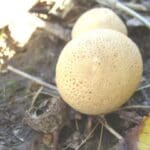
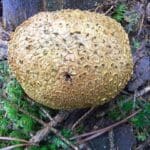
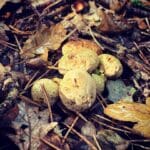



Leave a Reply
You must be logged in to post a comment.